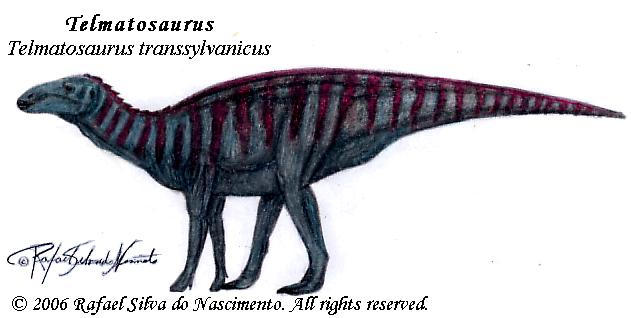Tumor found in dinosaur, could rewrite the history of human cancer, according to scientific study

In a fossilized jawbone more than 70 million years old , an international group of scientists found something that could forever change our understanding of cancer.
This is a 'Telmatosaurus transsylvanicus', a herbivorous dinosaur from the late Cretaceous, whose bone remains reveal a rare benign tumor known as ameloblastoma.
This discovery allows us to trace the evolutionary origins of cancer and suggests that the mechanisms that cause it—and perhaps those that suppress it—have been present long before the emergence of humans.
This discovery was presented by researchers from Imperial College London, University College London, and the University of Bucharest, and recently published in the journal Biology.

Illustration of a 'Telmatosaurus transsylvanicus'. Photo: Rafael Silva do Nascimento / taken from Deviantart.com
The dinosaur specimen, collected from the Sibișel River in Romania, was a juvenile Telmatosaurus transsylvanicus and showed a clear deformity in the lower jaw.
Using noninvasive techniques such as computed tomography (micro-CT) and scanning electron microscopy (SEM) , scientists identified structural features similar to those of modern ameloblastomas —tumors that still affect humans and other species—revealing the extraordinary preservation of the fossilized soft tissue.
SEM images revealed erythrocyte-like structures and collagen fibers within the tumor, suggesting unexpectedly detailed cellular preservation.
This not only provides information about the type of cancer that affected dinosaurs, but also allows us to study the molecular basis of the disease in organisms that lived tens of millions of years ago.
A window into the evolution of cancer The study's authors insist that these types of findings should not be viewed as isolated cases. The recurring presence of tumors in dinosaur fossils—especially in hadrosaurs like Telmatosaurus—suggests that cancer was a common biological threat even in ancient times.
Today, species like elephants have developed multiple copies of the TP53 gene, known as the "guardian of the genome," allowing them to efficiently detect and repair DNA damage.
Whales like the bowhead whale exhibit a remarkable capacity for genetic repair. However, experts still don't know whether dinosaurs shared these adaptations or possessed completely different solutions at the molecular level.
Research on the dinosaur specimen found suggests that some genetic pathways linked to cancer in humans may have much older roots than previously thought.

Images showing density variations within structures. Photo: MDPI.
For example, a mutation in the BRAF gene (V600E) has been identified in human ameloblastomas, which also occurs in dogs and mice.
If paleobiologists were able to confirm that this same alteration existed in the dinosaur tumor, it would open the door to the evolutionary conservation of tumor pathways.
paleoproteomics One of the most innovative aspects of this work is the use of paleoproteomics: the analysis of proteins preserved in ancient fossils. Unlike DNA, which degrades rapidly, proteins can survive for millions of years under favorable conditions.
This allows for the detection of pigments, collagen, and other relevant molecules that can provide clues about the metabolism, physiology, and diseases of extinct species.
In this study, techniques such as mass spectrometry and electron microscopy were used to identify specific proteins within the tumor.
In conclusion, cancer, far from being a “modern disease,” has accompanied multicellular organisms for millions of years.
Understanding their evolutionary history not only allows us to study their persistence, but can also provide valuable clues for their treatment.
ANGELA MARÍA PÁEZ RODRÍGUEZ - SCHOOL OF MULTIMEDIA JOURNALISM EL TIEMPO.
eltiempo





